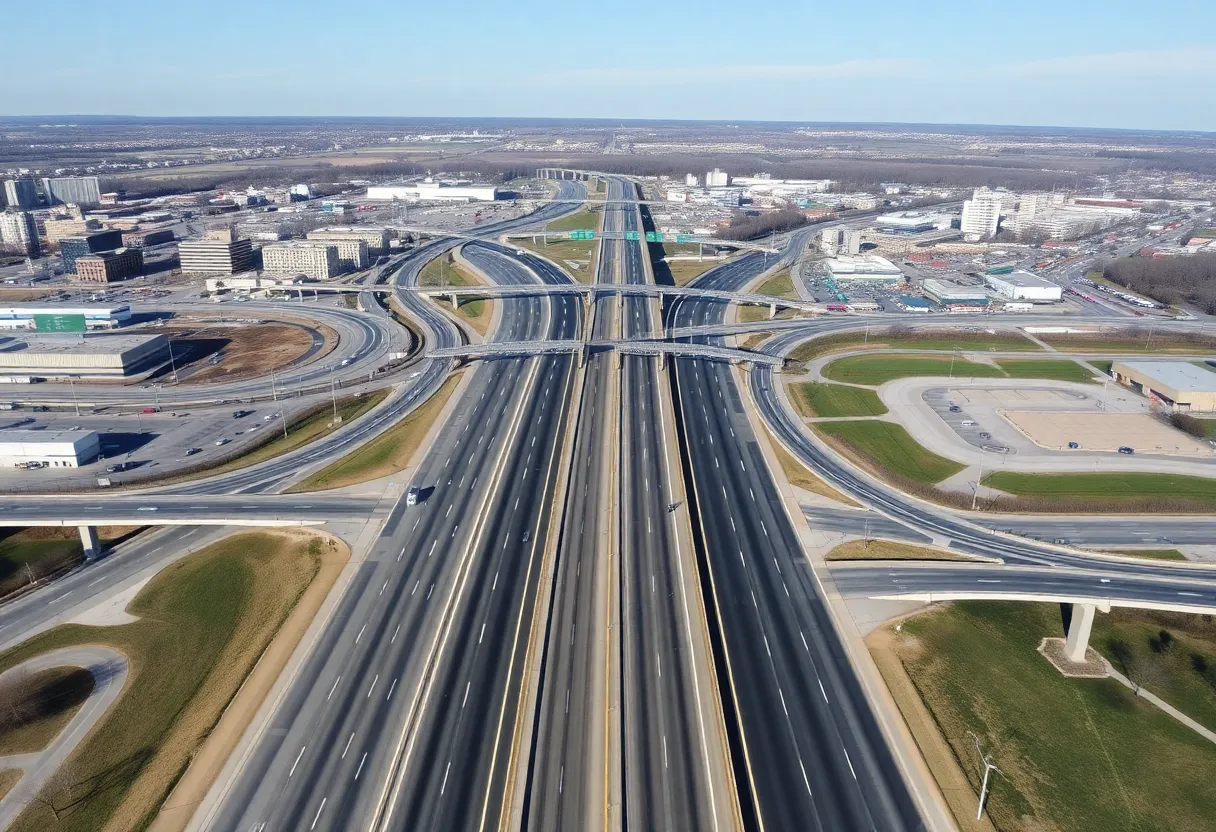Buffalo, NY, October 5, 2025
Traffic conditions on Buffalo’s vital I-190 highway have improved significantly as key ramps have reopened following emergency repairs. The New York State Department of Transportation’s swift action has allowed commuters to expect smoother travel, reducing average travel times by up to 50%. Despite some residual slowdowns, officials confirm a marked improvement in flow, easing the burden on thousands of daily travelers.
Buffalo
Relief for Commuters: I-190 Ramps Reopen After Emergency Repairs Ease Traffic Chaos
Buffalo, NY – Traffic on a vital highway in Western New York improved significantly on Friday as several key ramps along the I-190 reopened following urgent emergency repairs. Commuters who endured substantial delays earlier in the day due to ongoing construction can now expect smoother travel conditions.
The New York State Department of Transportation (NYSDOT) acted swiftly to address issues stemming from the repairs, allowing the ramps to resume normal operations by late afternoon. This development marks a turning point for drivers navigating the busy corridor that connects downtown Buffalo to the Peace Bridge and points north toward Niagara Falls. Earlier disruptions had caused backups stretching for miles, affecting thousands of daily commuters, truckers, and visitors to the region.
Officials with the NYSDOT confirmed that the reopened ramps include critical access points near the Scajaquada Expressway interchange and other high-traffic areas. While some residual slowdowns may persist over the weekend, the agency reports a marked improvement in flow, reducing average travel times by up to 50% compared to peak disruption hours earlier in the week.
Background on the Disruptions
The closures began mid-week as part of a larger infrastructure maintenance project aimed at upgrading aging components of the I-190, a major artery in Buffalo’s transportation network. Emergency measures were necessitated after initial assessments revealed unexpected deterioration in ramp structures, prompting a rapid response to ensure safety. Construction crews worked around the clock, focusing on resurfacing, barrier repairs, and drainage improvements to prevent future incidents.
Prior to the reopenings, traffic chaos was evident across the city. Reports indicated that alternative routes, including the Route 198 and local surface streets, became overwhelmed, leading to gridlock in neighborhoods like the West Side and Black Rock. School buses, emergency vehicles, and delivery services faced particular challenges, with some delays extending commute times by over an hour. The situation was compounded by typical Friday afternoon rush hour volumes, which typically see the highway handle more than 100,000 vehicles daily.
Safety Measures and Public Advisory
In light of the recent events, the NYSDOT is urging drivers to exercise caution on the I-190. Signage has been updated to guide motorists through any remaining work zones, and variable message boards are in place to provide real-time updates. Motorists are advised to check traffic apps or the NYSDOT’s website before heading out, especially as weather conditions in the region can shift quickly this time of year.
The agency emphasizes that full normalization of all affected areas is anticipated by midweek, barring any unforeseen complications. This timeline includes completing minor finishing touches on the ramps and conducting final inspections to certify structural integrity. In the meantime, officials recommend allowing extra time for trips involving the highway and avoiding sudden lane changes in construction zones to minimize risks.
Impact on Buffalo’s Daily Life and Economy
The I-190 plays a pivotal role in Buffalo’s connectivity, serving as a gateway for cross-border trade with Canada and supporting local commerce. The temporary closures highlighted vulnerabilities in the city’s infrastructure, which has long been a focus of regional improvement efforts. Recent investments in highway maintenance, part of broader state initiatives, aim to modernize these routes to handle increasing traffic loads from population growth and tourism.
Local businesses near the affected areas reported mixed impacts during the disruption period. While some saw a dip in foot traffic due to accessibility issues, others adapted by promoting alternative delivery options. Community leaders have expressed appreciation for the swift repairs, noting that prolonged closures could have exacerbated economic pressures in an already recovering post-pandemic landscape.
Looking ahead, the NYSDOT plans to monitor the reopened sections closely and provide updates through public channels. This incident serves as a reminder of the ongoing commitment to safe and efficient roadways in Western New York. As Buffalo continues to grow as a hub for residents and visitors alike, such maintenance projects are essential to sustaining the vitality of its transportation system.
The reopening not only alleviates immediate commuter stress but also underscores the importance of proactive infrastructure care in a region known for its harsh winters and heavy usage. With conditions improving, drivers can look forward to more predictable journeys in the coming days.
FAQ
What caused the recent traffic disruptions on the I-190 in Buffalo?
Emergency repairs were required due to unexpected deterioration in ramp structures as part of a larger infrastructure maintenance project.
Which ramps on the I-190 were affected and have now reopened?
Key ramps near the Scajaquada Expressway interchange and other high-traffic areas have reopened.
How has traffic flow improved since the reopenings?
Traffic flow has improved significantly, reducing average travel times by up to 50% compared to peak disruption hours.
What is the expected timeline for full normalization?
Full normalization of all affected areas is anticipated by midweek.
What precautions are officials recommending for drivers?
The NYSDOT urges drivers to exercise caution, check traffic apps or the NYSDOT’s website, allow extra time for trips, and avoid sudden lane changes in construction zones.
Key Features of I-190 Traffic Recovery
| Feature | Description |
|---|---|
| Cause of Disruption | Emergency repairs due to deterioration in ramp structures |
| Affected Areas | Ramps near Scajaquada Expressway and high-traffic zones |
| Improvement Noted | Smoother flow with up to 50% reduction in travel times |
| Timeline for Full Recovery | Midweek normalization expected |
| Driver Precautions | Exercise caution, monitor updates, allow extra time |
Deeper Dive: News & Info About This Topic
HERE Resources
I-190 Traffic Returns to Normal Following Multi-Vehicle Crash




